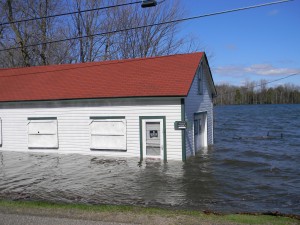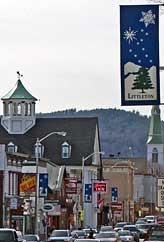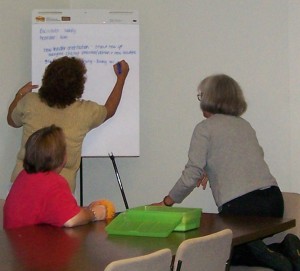In recent weeks many of our communities have been tested by flooding and other weather-related challenges. Meanwhile the economic news indicates that federal and state spending will continue to diminish. Of course these events will impact our communities. However, history proves that some communities emerge from these challenges stronger while others struggle unsuccessfully. How resilient is your community?
and other weather-related challenges. Meanwhile the economic news indicates that federal and state spending will continue to diminish. Of course these events will impact our communities. However, history proves that some communities emerge from these challenges stronger while others struggle unsuccessfully. How resilient is your community?
The qualities of resilient communities—those communities that take intentional action to build their capacity to respond to challenges—can be summed up in four dimensions: people, organizations, resources and process.
Within communities, strongly held beliefs and attitudes create community norms that either promote resilience or hinder it. Resilient communities exhibit a sense of pride and openness t o new ideas. They value education and demonstrate an awareness of the economic impact of social issues. Their leadership base is diverse and mobilizes the community around a common vision. People in resilient communities have a ‘can do’ attitude.
o new ideas. They value education and demonstrate an awareness of the economic impact of social issues. Their leadership base is diverse and mobilizes the community around a common vision. People in resilient communities have a ‘can do’ attitude.
Communities need resources in order to get things done but the presence of resources does not guarantee results. More important is how the resources are viewed and utilized by the community. Resilient communities are aware of and build on their local resource strengths while strategically seeking external resources to achieve their goals. They view external resources as supplemental and temporary.
Following are five strategies that any individual or group can begin to work toward to make a community more resilient.
Strategy #1 is open communication. Good communication requires an open and transparent process, opportunities for all sides to have input, and time to gather information. Your goal should be to get the information out so that any reasonably interested citizen would be aware of what is going on and have an opportunity to participate in the conversation.
Strategy #2 is a timeline. No one wants to be part of a process that has no end in sight. Request that decision-making bodies set clear deadlines for each phase of the deliberation, post those dates publically and then move through the process as planned.
Strategy #3 is positive reflection. Rumors, negative publicity or hostility toward those with opposing opinions must be discouraged. All discussion should be generated from a place of mutual respect. Positions should be framed in ways that do not make other options seem “wrong”.
Strategy #4 is compromise. The key to successful negotiation is figuring out a way that all sides can win. Maybe not exactly what they thought they wanted but something that will be of equal or greater perceived benefit.
Strategy #5 may be the most important – a shared vision for the community. If there is  not a shared overall view of what matters and why then trying to resolve issues involving values and scarce resources will never be resolved in a satisfactory way and there will be perceived winners and losers which will contaminate future discussions.
not a shared overall view of what matters and why then trying to resolve issues involving values and scarce resources will never be resolved in a satisfactory way and there will be perceived winners and losers which will contaminate future discussions.
Each of these strategies result in communities that are more resilient, more livable and more attractive to its citizens. For more information on how to make your community stronger please check out the UVM Extension website.

